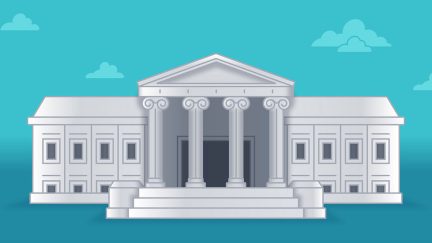For more stories like this, sign up for the PLANADVISERdash daily newsletter.
DOL Secretary Nominee Walsh Faces Senate Hearing This Week
Sources say Marty Walsh’s long-term ties to organized labor will likely be a main topic of discussion at the forthcoming confirmation hearings, but pension issues and retirement security are also likely topics.
Marty Walsh, who is President Joe Biden’s nominee to become the next secretary of labor, is scheduled to testify later this week before the Senate Committee on Health, Education, Labor and Pensions (HELP).
Walsh’s February 4 confirmation hearing is expected by some sources to be one of the more hotly contested hearings of the incoming Biden cabinet, given the relatively high profile of his body of work in the public eye, which includes winning two terms as the mayor of Boston and serving as president of the Laborers’ Union Local 223. Notably, Walsh first joined Local 223 at age 21 as a member before eventually advancing to becomes its leader, a fact underscored by the Biden administration in a statement confirming Walsh’s nomination.
In the statement, the administration says Walsh is “a champion for workers,” arguing he has the relationships and deep experience necessary to usher in “a new era of worker power.” Such ambitions have earned the praise of union leaders across the U.S., while soliciting notes of caution and concern from business groups and chambers of commerce.
IBEW Local 103, the largest electrical workers union in New England, issued a statement characteristic of Walsh’s standing in the organized labor movement in the United States.
“Marty Walsh is a tremendous leader with the kind of empathy, vision and commitment to working families that our nation needs,” the union states. “IBEW Local 103 has seen firsthand that Marty Walsh is a champion for all working people. We share his values that every worker deserves access to great training, great careers and a chance at the American dream. As an organizer, legislator and mayor, Marty Walsh has demonstrated his profound commitment to making stronger communities and safer workplaces.”
Such statements stand in sharp contrast to those sent by some Republican members of Congress. For example, Representative Virginia Foxx, R-North Carolina, issued a derisively worded statement suggesting Walsh would seek to “crush our economic recovery by strangling business owners with an onslaught of job-killing regulations and vindictive and overzealous oversight.”
Practically speaking, Walsh’s confirmation is possible without Republican support, though it could be difficult, given the Democrats’ razor-thin majority in the Senate. The Democrat’s majority makes it appear likely that Walsh will ultimately be confirmed, though it is still possible that the administration and the Democratic leadership in the Senate could choose to nominate someone else who has more bipartisan appeal. Readers may recall the lasting confirmation challenges the Trump administration faced early on in this area.
What is clear at this point is that, historically, an actual vote being cast that does not go in Walsh’s favor would be a rare thing indeed. According to an analysis from the National Constitution Center, Senate records show that only nine Cabinet nominees have been officially rejected once their nomination made it to a full floor vote. As the center reports, the last major cabinet rejection was for John Tower in 1989.
“Tower had headed the Senate Armed Services Committee until he retired in 1985,” the analysis recalls. “President George H.W. Bush had nominated Tower as defense secretary. The public debate over Tower’s nomination included a lot of mudslinging, and Tower lost the vote along party lines in the Democrat-controlled Senate. He was the only former Senate member rejected for a cabinet position by the Senate in its history. Dick Cheney was later approved in Tower’s place.”
Given the intensity of feelings about Walsh’s labor ties, some sources say they will be working hard to get senators to raise important retirement security issues during the upcoming nomination hearings. To that end, one source suggested Senators should explore the following questions:
- How would the nominee propose to expand opportunities for America’s workers and retirees to save for their retirement during their working years? Nearly 5 million employers currently do not offer a workplace retirement plan, leaving 28 million full-time employees and 15 million part-time employees without access to a workplace retirement plan. Would the nominee support generally requiring small businesses with 10 or more employees to offer a workplace retirement plan into which workers would be automatically enrolled with the right to opt-out?
- Many households have student loan debt and the average amounts owed continue to rise. Many younger workers cite their student loan debt as a primary reason for their inability to save for retirement. Would the nominee support allowing employers to provide matching contributions into an employee’s retirement account based on the amount of the employee’s student loan payments?
- America’s workers are not saving enough to ensure their own financial security. Current law allows individuals over the age of 50 to make catch-up contributions to improve their chances of saving enough for retirement. Would the nominee support extending this opportunity to other categories of individuals? If so, what other categories of individuals does the nominee believe should be given the ability to make catch-up contributions?
- How would the nominee propose to encourage and facilitate access to and use of protected lifetime income to ensure America’s workers and retirees do not outlive their retirement savings?
- Would the nominee support an increase in the required minimum distribution (RMD) age, adjusting mortality tables to reflect longer life expectancies, and modifying and exempting certain annuity benefits and payments from the minimum income threshold test to improve their retirement security?
- Would the nominee support expanding the options now authorized to be used as qualified default investment alternatives (QDIAs) in retirement plans to include protected and guaranteed lifetime income options such as an annuity?
- How would the nominee propose to preserve and promote access for retirement savers to professional financial guidance, education and information?
You Might Also Like:

JPMorgan Backed by DOL in 401(k) Forfeiture Suit

California Judge Orders More Details on Prohibited Transaction Allegations
